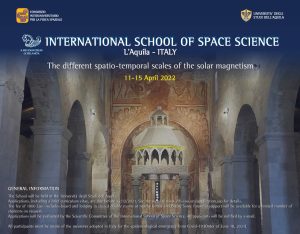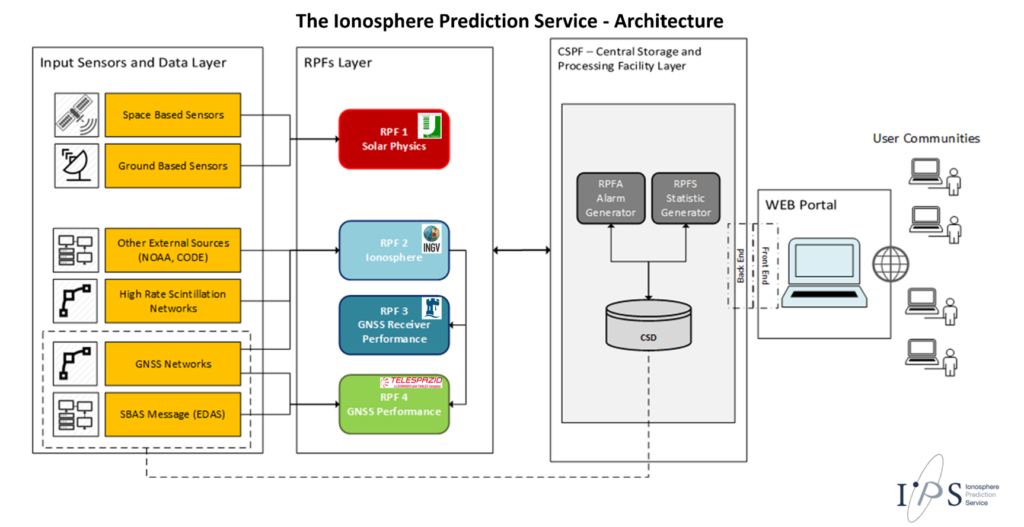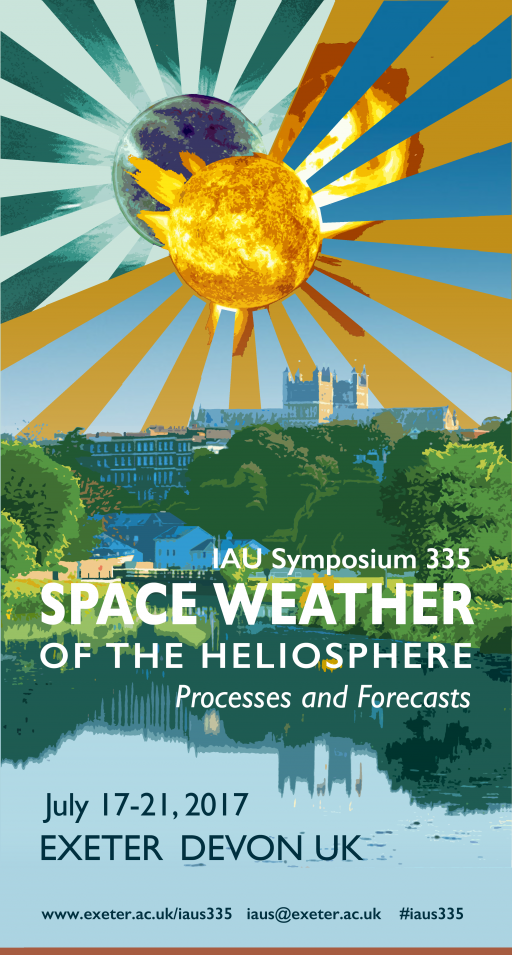Home » Uncategorized
Category Archives: Uncategorized
Course on “The different spatio-temporal scales of the solar magnetism”

The International School of Space Science of the Consorzio Interuniversitario per la Fisica Spaziale organizes a Course on “The different spatio-temporal scales of the solar magnetism”, to be held in L’Aquila, Italy, 11-15 April, 2022 directed by Prof. F. Zuccarello (Università di Catania, Italy) and Prof. L.Bellot Rubio (Instituto de Astrofisica de Andalucía, IAA-CSIC, Spain).
The School is aimed at providing an in-depth overview of the magnetic phenomena occurring in our star, as well as at presenting some of the most recent tools that can allow to directly tackle the analysis of the problems that are still present in the comprehension of solar magnetic phenomena, through hands-on sessions.
The main topics that will be examined are: the global magnetic field of the Sun and the solar cycle; the small-scale magnetic field: emergence and evolution; the global and local dynamo; the sunspots: processes of formation and evolution and the fine-structure of umbrae and penumbrae; magnetic field instabilities, eruptive events and their impact on Space Weather.
Applications are due before November 21, 2021.
For more information visit https://www.cifs-isss.org/ or send an e-mail to ssc@aquila.infn.it
The ionosphere prediction service prototype for GNSS users
Papers from SWICo members
Sreeja Vadakke Veettil, Claudio Cesaroni, Marcio Aquino, Giorgiana De Franceschi, Francesco Berrili, Filippo Rodriguez, Luca Spogli, Dario Del Moro, Alice Cristaldi, Vincenzo Romano, Roberto Ronchini, Stefano Di Rollo, Eric Guyader, Angela Aragon-Angel
The effect of the Earth’s ionosphere represents the single largest contribution to the Global Navigation Satellite System (GNSS) error budget and harsh ionospheric conditions can impact seriously on GNSS system functionality, including integrity, accuracy and availability. With the growing reliance on GNSS for many modern technological applications, reliable ionospheric forecasts can contribute to the understanding and mitigation of the impact of the ionosphere on our technology based society.

With this aim, the Ionosphere Prediction Service (IPS) project was set up to design and develop a prototype platform to translate the forecast of the ionospheric conditions into a service customized for different GNSS user communities. To achieve this overarching aim, four different product groups dealing with solar activity, ionospheric activity, GNSS receiver performance and service performance have been developed and integrated into a service chain, which is made available through an innovative and fully customizable web based platform. This paper provides an overview of the IPS project describing its overall architecture, products and platform.
Publication: Veettil, S. V., Cesaroni, C., Aquino, M., De Franceschi, G., Berrili, F., Rodriguez, F., … & Ronchini, R. (2019). The ionosphere prediction service prototype for GNSS users. Journal of Space Weather and Space Climate, 9, A41.
https://www.swsc-journal.org/articles/swsc/full_html/2019/01/swsc190019/swsc190019.html
Scientific long-term exchange – NAWA Ulam Programme
The aim of the Ulam Programme is to increase the internationalisation of Polish HEIs and scientific institutions. The Programme will allow both recognised and promising scientists with at least the doctoral degree, to visit Poland in order to strengthen the scientific potential of Polish entities and to participate in their scientific activities, primarily research projects and didactics. The Programme will allow to invite scientists from all around the world representing all fields of science to the Polish institutions of science and higher education. HEIs, scientific and research institutes will have the opportunity to invite specialists from their priority areas to Poland – they will make a significant contribution to the research conducted by a given institution, strengthen didactics or support the institution in applying for prestigious grants.
The Programme will facilitate a gradual increase in the number of foreign scientists involved in scientific research and teaching in Poland and also enable or deepen international contacts with foreign institutions.
Authorised applicants
An application under the Programme shall be submitted by an individual scientist who holds a doctoral degree awarded in a country other than Poland, does not hold Polish citizenship and has not lived, worked or studied in Poland since at least 2017. The condition of not being a Polish citizen does not apply to persons who are Polish citizens and whose full cycle of doctoral studies has been financed by the Polish government, as these persons are entitled to participate in the Programme,
The Programme is open to scientists representing all fields of science.
Activities implemented in the framework of the Programme
As part of the Programme, possible visits are those whose objective include:
- completing the first or a subsequent post-doctoral fellowship;
- conducting scientific research, including in cooperation with Polish scientists or research teams;
- obtaining materials for research or a scientific publication;
- conducting didactic classes at the host
Scholarship timeframes and financing
Foreign scientists may stay in Poland for 6 to 24 months, and they may be accompanied by members of their family, and in the case the Programme participant is a disabled person, by their assistant.
Scientists visiting Polish scientific institutions under the Programme will receive a monthly Scholarship for the duration of their stay and a mobility allowance, which will allow them to cover the travel costs.
Visit under the scholarship may not take place earlier than 1 October 2019 or later than 31 May 2020.
Deadline for submitting the proposals
The call for applications under the Programme will be held from 22 January to 23 April 2019 until 3:00 PM Central European Time (UTC +01:00) in an electronic form exclusively via the ICT system of the Agency.
More info at https://nawa.gov.pl/en/scientists/program-im-ulama/call-for-proposals
L’ASI ha ospitato il workshop del Gruppo di Lavoro Nazionale dedicato allo Space Weather
Lo scorso 18 dicembre la sede dell’ Agenzia Spaziale Italiana ha ospitato il workshop “Italy’s Roadmap towards Space Weather Science”. L’evento aveva lo scopo di presentare alla comunità scientifica il percorso programmatico (roadmap) – predisposto dal Gruppo di Lavoro Nazionale appositamente creato da ASI – avente come scopo finale la creazione di una base dati scientifica sulle tematiche dello Space Weather.
L’evento è stato introdotto dai saluti di Barbara Negri, Responsabile dell’Unità di Esplorazione ed Osservazione dell’Universo di ASI, che ha ricordato il grande valore accordato dall’Agenzia alla tematica, in considerazione delle numerose risorse di valore internazionale espresse dall’Italia in quest’area.
Christina Plainaki, ricercatrice dell’Unità di Ricerca Scientifica di ASI e coordinatore del Gruppo di Lavoro, ha poi illustrato le linee generali della roadmap. Di particolare rilievo, il proposito di raccogliere in un unico centro dati presso ASI (denominato ASPIS) i risultati degli esperimenti scientifici da spazio e delle misure da terra prodotte da diversi Enti di Ricerca (INAF, INFN, INGV) e dalle Università nazionali.
Credits. NEWS ASI
https://www.asi.it/it/news/space-weather-al-centro-dellattenzione
Italian contribution at the IAU Symposium 335 “Space Weather of the Heliosphere: Processes and Forecasts”
 On the 17th-21st July 2017, several memebers of SWICO joined the International Astronomical Union Symposium at University of Exeter, UK. The subject of the symposium was “Space Weather of the Heliosphere: Processes and Forecasts” and they presented several projects.
On the 17th-21st July 2017, several memebers of SWICO joined the International Astronomical Union Symposium at University of Exeter, UK. The subject of the symposium was “Space Weather of the Heliosphere: Processes and Forecasts” and they presented several projects.
Among the others, Mauro Messerotti (INAF-OATS) gave an invited talk on “Defining and Characterising Heliospheric Weather and Climate”. The talk was focused on the basic definitions, phenomenology and workflows that lead to monitoring, modelling and predicting both Heliospheric Weather and Heliospheric Climate by pointing out gaps and pitfalls that can affect the development of a robust operational machinery. This requires step forwards in understanding the physics of heliospheric phenomena via long-term, multi-wavelength, and multi-scale observations, still a chimera despite the social benefits it could provide.
Stefania Lepidi, from Italian Istituto Nazionale di Geofisica e Vulcanologia (INGV), presented two posters in the session “Impact of solar wind structures and radiation on magnetospheres”. The first poster deals with the determination of the Earth’s magnetic dip poles using measurements from the Swarm ESA’s constellation of satellites; the second one, in collaboration with the University of L’Aquila, was about the determination of the southern polar cusp location from geomagnetic ground measurements at a pair of Antarctic stations. In both works, the magnetospheric dynamics related to the interaction with the external interplanetary magnetic field was investigated.
Roberta Forte (UTOV) gave a talk in the session “Space weather monitoring, instrumentation, data and services: Future Missions and Instrumentation”. The focus of the talk was the calibration pipeline and the first data analysis results of the MOTH (Magneto-Optical filters at Two Heights) instrument, a dual channel telescope, based on Magneto-Optical Filters (MOFs), that provides full disk line-of-sight Doppler velocity and magnetic field at two levels in the solar atmosphere, useful to investigate atmospheric dynamics and Space Weather phenomena.
Two posters were presented in the same session. A first poster introduced the SWERTO service, an operational Space Weather service that will allow to access scientific data mainly from satellite-borne (e.g.,PAMELA, ALTEA) and ground-based (e.g., IBIS, MOTH II) instruments in which UTOV Space Weather team is involved. A second poster presented the Ionospheric Prediction Service (IPS) project, a collaboration of Telespazio (coordinator), Nottingham Scientific Ltd, Telespazio Vega Deutschland, the University of Nottingham, the University of Rome Tor Vergata and the Italian Institute of Geophysics and Volcanology (INGV), with the aim of designing and developing a prototype platform able to translate the prediction and forecast of the ionosphere effects into a service customized for specific GNSS user communities.
Gianluca Napoletano, from University of L’Aquila, presented a poster in the session “Forecasting Models” about a probabilistic approach to Interplanetary Coronal Mass Ejection Propagation developed using a Drag-Based Model.
